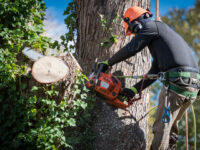Four Types of Search Engine Optimization (SEO)
Search engine optimization is a wide field encompassing technical actions taken on the back end and user content improvements. There are four types of SEO: on-page, off-page, technical, and local.
When you optimize your content for search engines, the first step is researching keywords and phrases. The best keywords are specific and relevant to the user’s intent. Click the https://www.rankboss.com/ to learn more.
On-page optimization is a set of techniques that improve the performance of individual pages on your website. It includes optimizing title tags, meta descriptions, and content (including keyword usage) to rank higher on SERPs for searches related to your targeted keywords. This can increase organic traffic and help users find the information they’re looking for. On-page optimization also includes optimizing internal links and URLs, and ensuring a positive user experience.
In the past, a page’s ranking in search engine results pages (SERPs) was all about focusing on specific keywords and using them in expected places. But as search engines became more sophisticated, their algorithms evolved to focus on user experience and context. Now, on-page SEO is the foundation for search engine success. This is why it’s so important to use best practices when creating your content and site structure.
Title tags and meta descriptions are two of the most important on-page SEO factors. They appear in SERPs as the page title and snippet of text under each listing. Getting these right can greatly influence a searcher’s decision to click on a link or not. Title tags should be clear and concise, while incorporating target keywords where possible.
Similarly, meta descriptions should clearly describe the content of the page and be optimized for searchers. Meta descriptions are a great place to include your target keywords, but you should avoid keyword stuffing, which is the practice of repeating a keyword over and over again. This can lead to a penalty from Google.
Lastly, it’s critical to ensure that your content is readable and user-friendly. This is especially important as search engines shift to mobile devices. To make sure your content is mobile-friendly, optimize your image size and alt text, use responsive design, and test your site on multiple devices. Taking the time to optimize your content for mobile will pay off in the long run.
Off-page optimization
The goal of off-page optimization is to increase the credibility and authority of your website, which can help boost search engine rankings. This is a critical element of digital marketing and should be part of your overall marketing strategy. Off-page SEO includes tactics like building backlinks, social media marketing, and influencer outreach. Using these tactics can boost your brand awareness, improve your site’s organic search traffic, and generate leads and sales.
Off-page SEO involves optimizing elements outside of your website, while on-page optimization focuses on improving the content inside of your website. Backlinks are an essential off-page SEO tactic, and they can help you rank higher on search engines. They are essentially votes of confidence from other websites for your content and website. However, you need to ensure that your backlinks are quality and relevant to your niche. Otherwise, your website will be penalized by search engines.
In addition to backlinks, off-page SEO also includes other off-site factors, such as social media marketing and guest blogging. Social media marketing can be used to promote content and increase engagement, while guest blogging can help you build a following and gain visibility on other sites. Off-page SEO can take a while to work, but it can be a great way to boost your website’s credibility and reach.
Brand mentions are another off-page SEO tactic that can boost your search engine ranking. These are references to your business on third-party websites, such as social media platforms and review sites. These can be either natural or created links. A natural link is one that was found naturally, such as a comment on a blog post or a directory listing. Created links, on the other hand, are those that you or your team built intentionally through self-submissions, forums, or press releases.
Another off-page optimization technique is to participate in industry events and speak at conferences. This can help you network with other industry experts and showcase your expertise, which can lead to backlinks and increased search engine visibility. Off-page SEO also includes promoting your business in local listings, which can boost your local SEO rankings. Finally, it’s important to monitor and respond to reviews and ratings from customers. While Google doesn’t allow businesses to incentivize reviews, there are ways to encourage them, such as by offering a reward or requesting feedback after each service.
Link building
Link building is a crucial component of search engine optimization (SEO). It helps improve the visibility of a website on search engines by increasing its ranking. Moreover, it can also help increase traffic and conversions. Nevertheless, link building is not easy and requires time and effort to achieve success. In addition, it can be expensive and risky if not done correctly. Therefore, it is important to follow a link-building strategy that focuses on quality over quantity.
A link is a clickable text that points to another website or resource. It is typically highlighted in blue or underlined, indicating to users that it can be clicked. A website’s rank is determined by the number of incoming links it has, as well as the number and quality of outgoing links. Consequently, a high-quality website will be more likely to rank higher than a low-quality one.
Outgoing links are links that point to other websites, while inbound links are links that point to pages on a website. Both types of links can be used to boost SEO, but it’s essential to balance the number of inbound and outgoing links so that your website gets the most value from both.
When it comes to link-building, the most effective strategy is to focus on getting links from other sites that are relevant to yours. This can be accomplished through a variety of ways, such as guest blogging and social media marketing. In addition, it is critical to build links from quality sources that are reputable and trustworthy.
Obtaining these links requires both receiving external links and adding them to your own content. The latter is known as on-page optimization, while the former is known as off-page optimization. This type of optimization is out of the control of the site owner and is often performed by a professional.
To improve your off-page SEO, it is best to use tools like Moz’s free Link Explorer tool. This tool allows you to analyze any page and provide reports on backlinks, competitors, and broken links. Moz also offers a paid version of Link Explorer, which provides more in-depth data and analysis.
Keyword research
Keyword research is a crucial part of any online marketing strategy. It helps you discover the keywords that your audience is using to find products or services, as well as the words that search engines are using to rank websites. This information is used to create content that matches your audience’s search intent, which can help you achieve more organic traffic and convert them into customers.
When conducting keyword research, it’s important to consider the intent behind each term. Some keywords have commercial intent (like “used golf clubs for sale”) while others have informational intent (“what are the best golf clubs”). Understanding this can help you plan your content, and ensure that it aligns with searcher needs. It’s also important to consider the volume and competition level of each keyword. This is important because low-volume keywords may be difficult to rank for, while high-volume keywords are more likely to be competitive.
There are a variety of tools that can help you conduct keyword research. One popular tool is SE Ranking’s Keyword Research Tool, which generates thousands of keyword suggestions for a given seed keyword. It also offers a variety of other parameters to evaluate the performance of each keyword, including search volume, organic CTR, and keyword difficulty. Another helpful tool is Google’s Keyword Planner, which allows you to enter a keyword and receive a list of suggestions.
Once you’ve collected a list of keywords, it’s important to analyze them by their popularity and competition levels. This will help you prioritize keywords that offer the most value for your business. You should also assess the types of keywords your competitors are targeting, which can provide ideas for new keywords to target.
When performing keyword research, it’s essential to keep in mind that people’s search terms are constantly changing. This is why it’s important to continuously update and refine your keyword list. You should also monitor your SEO performance to identify potential issues that need to be addressed. By doing this, you’ll be able to avoid any costly mistakes. This will help you maintain effective organic traffic and maximize your return on investment.






